
15 Best Things To Do in Taipei

Why Visit Taipei?
Taipei is a thriving and vibrant Asian city where Japanese and Chinese cultures fuse with the 21st century and is becoming one of Asia’s top destinations to visit.
I love visiting Taipei for its street food markets, old-world temples, outstanding museums, historic and cool neighbourhoods and glitzy shopping centres. All of which are surrounded by a wonderful blend of old buildings and modern skyscrapers.
From almost any point in the city, you will see one of the world’s tallest buildings, Taipei 101, towering above the city skyline. This impossible-to-miss skyscraper is inspired by the bamboo plant and with its green hue colouring is one of the greenest skyscrapers in the world.
Here you can also visit one of the greatest Chinese art and antiquities collections in the world. This collection is housed in the National Palace Museum. This museum is on par with other top museums in the world such as the Louvre or Hermitage and houses priceless and vast Chinese collections over an impressive historical range that spans many millennia and multiple Chinese dynasties.
Finally, what makes Taipei a great place to visit is the street food and this city has the best street food in the world. You will love eating the delicious food from the many restaurants and stalls throughout the city; and some have made it into the Michelin guide.
So, here are our 15 best things to do to help you plan your trip to visiting this world-class capital.
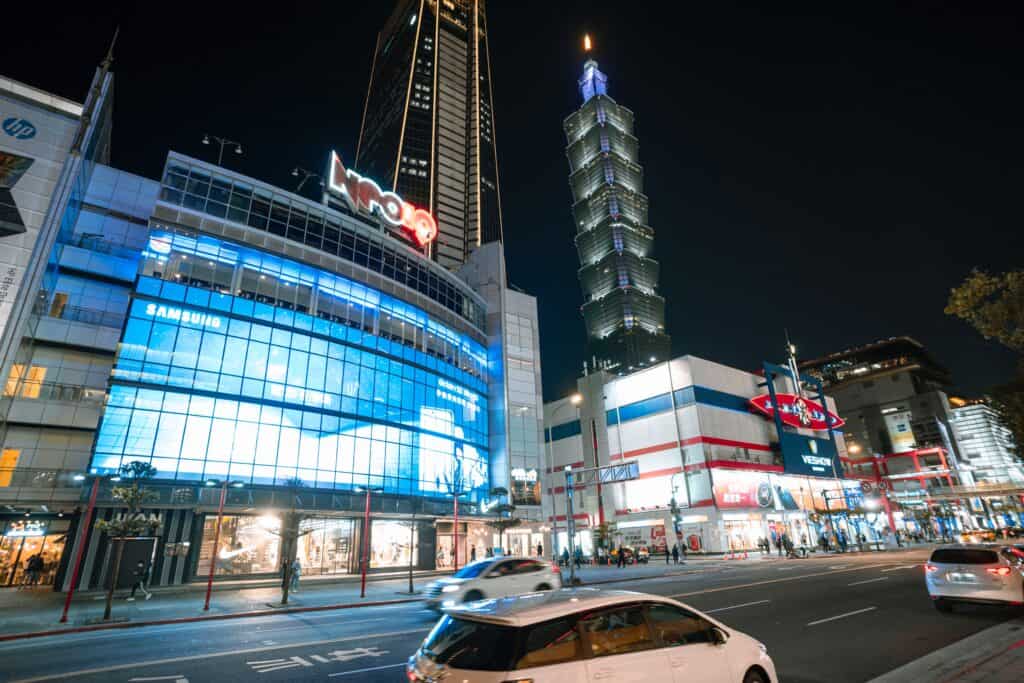
1. Taipei 101
Located in the Xinyi District, Taipei 101 is one of the most iconic landmarks in all of Asia. Once the world’s tallest building, Tapei 101 is one of the world’s greenest skyscrapers built to withstand typhoon winds and earthquakes that often occur in this part of the world.
Influenced in design by the bamboo plant, this 101 Feng Shui storey building rises 508 metres above the ground and the observation deck gives a wonderful 360-degree view of the city. The elevator, the world’s fastest, gets you to the observation deck on the 89th floor in 37 seconds.
Visitors can also explore the many shops and restaurants located within this mall complex on the lower floors.
The observation floor is open daily between 11:00-21:00 and the mall is open Sunday -Thursday 11:00-21:30 and Friday, Saturday 11:00-22:00.
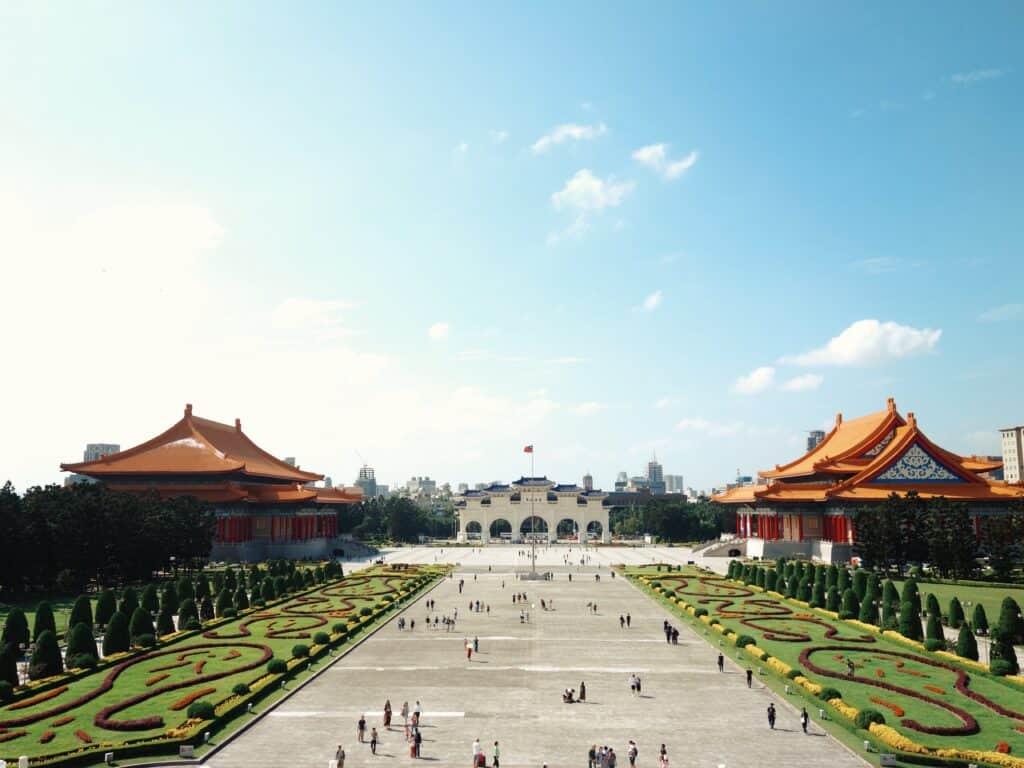
2. Liberty Square
This huge space is used for public events and here you will find the National Theatre and National Concert Hall, as well as the The Archway (an impressive gate structure).
The theatre and concert hall are based on Chinese architecture and the whole area is a surrounded by landscaped gardens. A great place for photography and to hang out.

3. Chiang Kai-Shek Memorial Hall
Part of the Liberty Square complex is Chiang Kai-Shek’s Memorial Hall. This building is the city’s second most famous landmark after Taipei 101. Built to commemorate the former President of the Republic of China, Chiang Kai-Shek, and stands as a reminder of his contribution to Taiwan’s history.
This blue and white octagonal building hosts exhibitions and performances. Here you will also find a bronze statue of Chiang Kai-Shek watched over by guards along with permanent exhibitions displaying artefacts from his life. The views from this building look over Liberty Square and are very impressive.
The Memorial Hall is open daily from 9:00-18:00 (apart from public holidays).
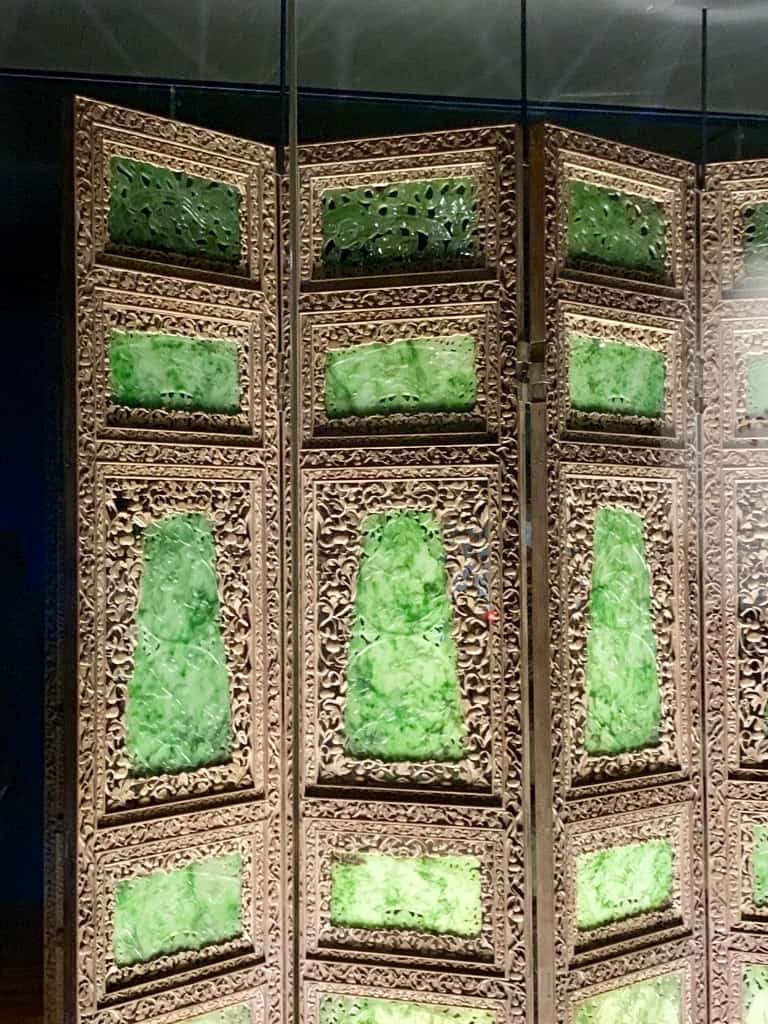
4. National Palace Museum
Arguably the world’s finest collection of Chinese art and antiquities, many objects on display are from Beijing’s Forbidden City and moved to Taiwain when the government of the Republic of China relocated.
The National Palace Museum was specifically built to house this incredible collection of priceless Chinese art and artefacts that covers over 5,000 years of Chinese history. With over 700,000 pieces, you can explore ancient pottery, jade and bronze art, calligraphy and paintings that are truly awe-inspiring.
In addition to its permanent collections, the museum also hosts special exhibitions throughout the year featuring works from renowned Chinese artists as well as modern masters. Whether you’re interested in learning about ancient cultures or just looking to take in some breathtaking art, a visit to The National Palace Museum is sure to leave you with lasting memories.
Located in the Shilin district of the city, the National Palace Museum is open Tuesday-Sunday 9:00-17:00.
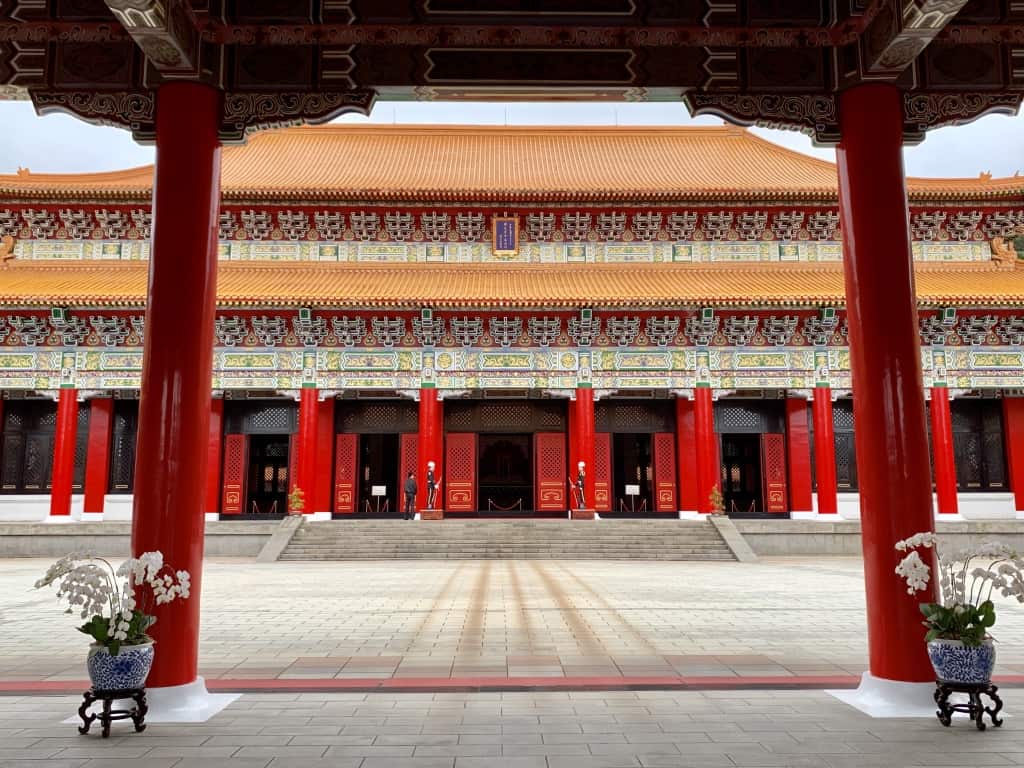
5. National Revolutionary Martyrs Shrine
Located in the Zhongshan district and built-in 1969, this memorial shrine is dedicated to the fallen members of the Armed Forces and is built in a similar style to the Taihe Dian Imperial Palace in Beijing.
It is a great place to watch the changing of the guard ceremony which happens on an hourly basis during the day.
The shrine features monuments and sculptures that commemorate soldiers. Inside the main hall are three levels displaying over 2,000 names written on bronze tablets while outside two large statues stand guard – one representing Confucianism and the second symbolizing democracy. The solemn atmosphere at this national monument makes it an important stop for visitors wanting to learn more about Taiwan’s past.

6. Temples
Dotted in between the modern buildings and skyscrapers there are a number of impressive historical and ornate temples. From the grand Longshan Temple to the peaceful Bao’an Temple, you can explore both the traditional architecture and culture by visiting these impressive sites.
We recommend visiting the following three temples:
Longshan Temple
Longshan Temple is a renowned temple located in the Wanhua District. Built-in 1738 the temple has become an important place of worship for generations. This temple is dedicated to Guanyin, the Buddhist Goddess of Mercy and Compassion.
The complex consists of several buildings including the main hall, bell towers and smaller shrines dedicated to various deities. With its rich history and significance in Taiwanese culture, Longshan Temple is one of Taipei’s most beloved attractions.
Boa’an Temple
Bao’an Temple located in Datong district is a stunning example of traditional Chinese architecture and it stands out amongst its modern surroundings. Originally constructed in 1742 and renovated many times, this temple is now a UNESCO World Heritage site and it looks even more amazing when it is lit up at night.
It has served as a place of worship for Taoists since its opening. Inside, visitors can watch or take part in various daily temple life activities such as incense burning, prayer sessions, and fortune telling.
This temple also houses over 500 Buddhist statues and paintings which depict important scenes from Buddhism’s history. In addition to its religious significance, Bao’an Temple is also a popular spot due to its vibrant decorations and detailed designs which are sure to fascinate anyone visiting this temple.
Confucius Temple:
Located in the Datong district is the Confucius Temple and pays tribute to one of history’s most esteemed philosophers and educators – Confucius. This temple was built in 1879 and architecturally modelled on the original Confucius Temple in Qufu, China.
Confucius cherished simplicity above all else, and this characteristic is exuded throughout this temple. Unlike the grandiose decorations of many other temples, here you will find only uncomplicated beauty and decor.
At first, Confucius temples featured sculptures of the philosopher that were crafted by various artisans; these sculptures all varied from one another and Emperor Tai Tsu (who reigned during 1368 A.D.) felt this lack of uniformity was unacceptable. As such, he declared all new Confucius temples would contain only memorial tablets. This rule was taken even further when Emperor Shi Cong came to power between 1522-1586, who ordered that any existing images be replaced with tablets – this edict is still observed today.
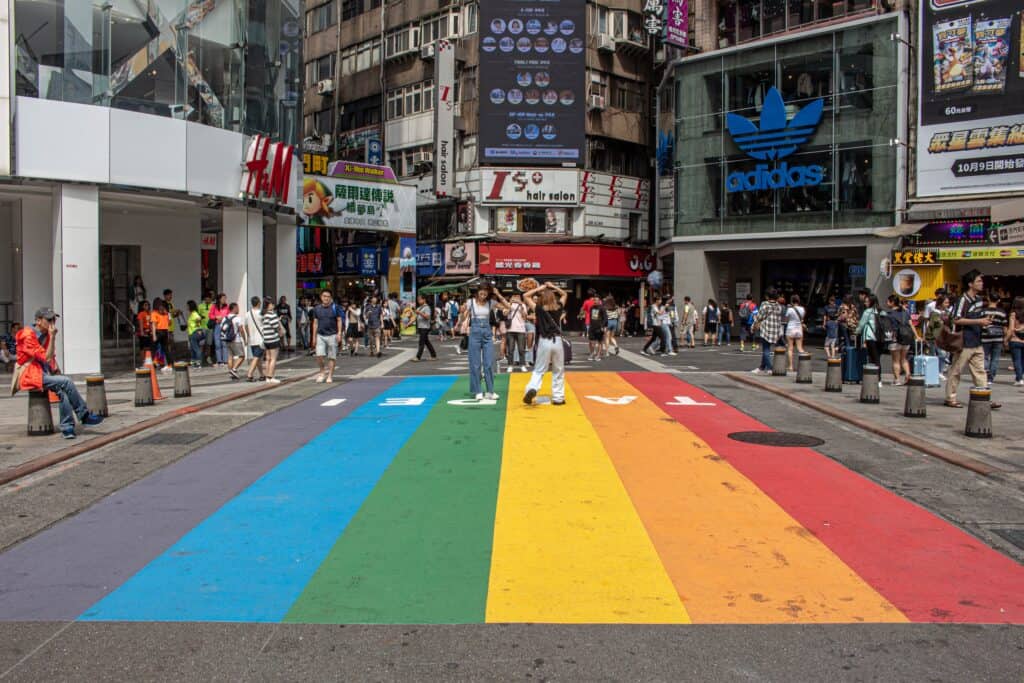
7. Ximending Shopping District
Ximending Shopping District is one of the most popular shopping areas in Taiwan. Like Times Square in New York or Shibuya and Shinjuku in Tokyo this area is lit up by neon signs and large screens.
This pedestrianized vibrant and busy zone of the city is packed with international brand-named shops, local boutiques, budget shops and street vendors. This area also serves as a cultural hub, with many entertainment and food options including cinemas, karaoke bars, restaurants, and cafes.
Whether you’re looking for the latest trends, shopping for souvenirs, wanting to eat or just enjoy the city atmosphere, Ximending is the place to be.
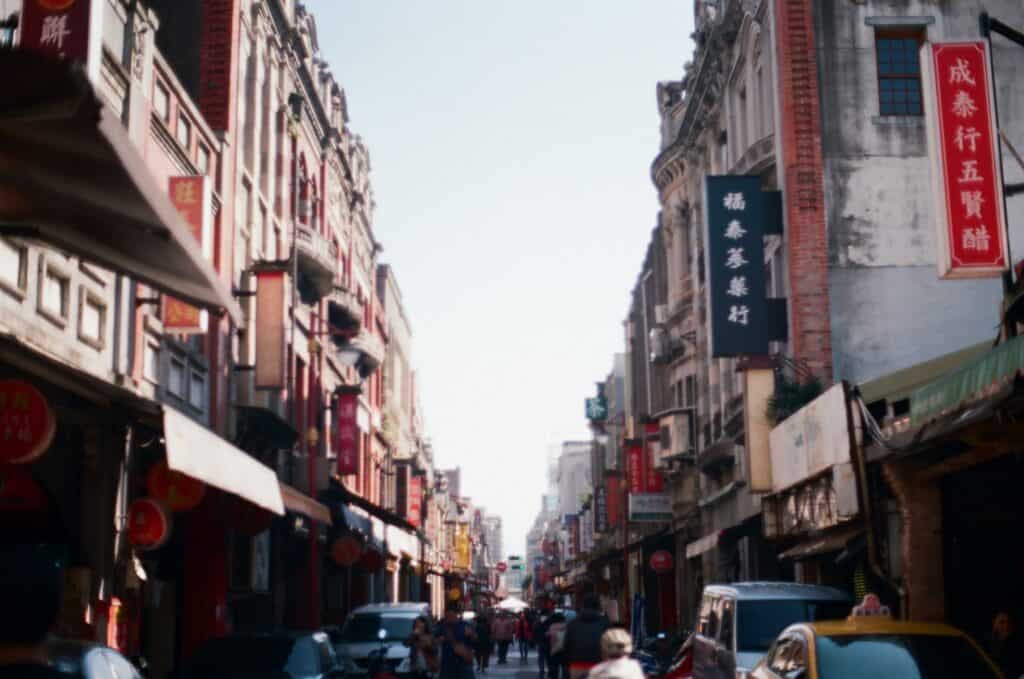
8. Dihua Street
Dihua Street, located in the Datong District, is one of the oldest commercial streets in the city. It first became a commercial area during the late Qing Dynasty in 1872 when merchants from Fujian province began to settle here. From then on, Dihua Street continued to serve as an important centre for trade and commerce in the city.
Over time, various traditional Chinese stores such as herbal pharmacies, fabric stores, tea houses, hardware stores have opened up along this historic street giving it a unique charm that sets it apart from other parts of Taipei City.
Today Dihua Street still remains an integral part of Taiwanese culture with its bustling market atmosphere attracting locals and tourists.
Strolling down this colourful street, you will be exposed to all kinds of sights and sounds. Here you can buy everything from traditional Chinese herbal medicine, tea, dried goods, local crafts, and souvenirs. The street is particularly busy during the holidays as locals flock here to buy their lunar holiday necessities.
9. The Red House
Located in the Wanhua district, this 2-storey red-brick octagonal building was built in 1908 by a Japanese architect and was the country’s first public market. Over the years the use of the building shifted towards performance arts and today it serves as a cultural centre for the city. Here you can explore the creative boutiques and studios or attend one of the special events that take place throughout the year. Over the weekends a small outdoor market operates selling handicrafts.
Located on Chengdu Road the centre is open daily from 11-9:30, with slightly extended hours Friday and Saturday.
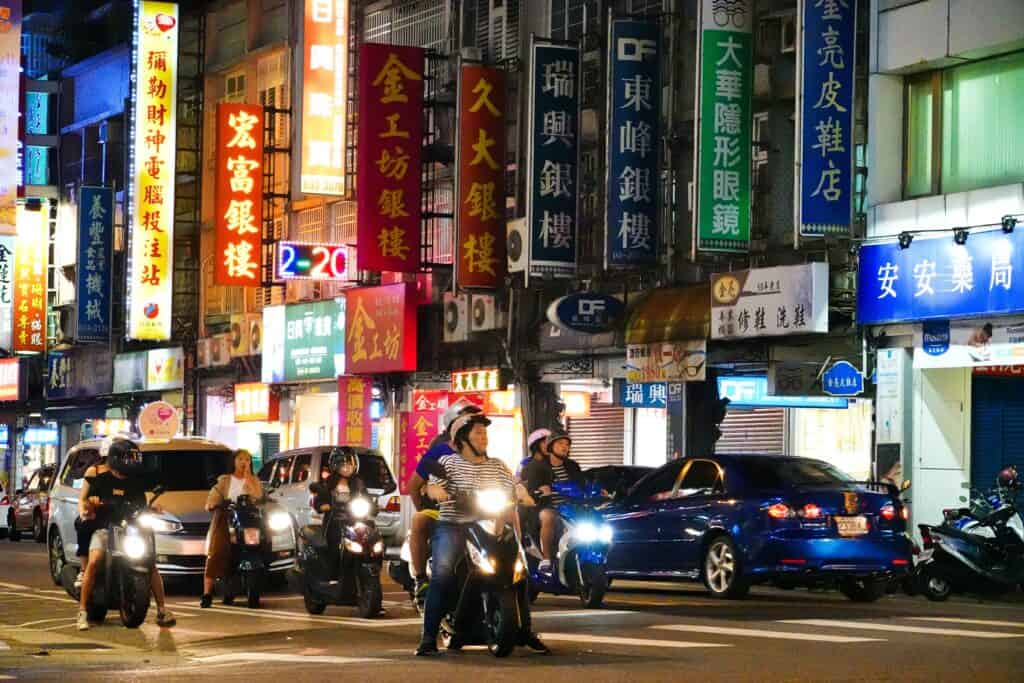
10. Yongkang Street
Yongkang Street is home to some of the best food in Taipei and is full of restaurants, cafes, tea houses, and street carts catering for all budgets and selling all types of food.
The star attraction is where the original branch of world-renowned Din Tai Fung restaurant is located. Famous for its xiaolongbao and tangbao (soup dumplings) which are prepared to perfection.
This main street is approximately 1km in length and has a number of roads/alleys leading of it, which are also filled with shops and places to eat.
The street is very centrally located very near the Chiang Kai-Shek Memorial Hall. Towards the end of the Yongkang street (heading south towards Qingtian Street) is also worth exploring as you will find some of the best preserved Japanese style houses; some of which have been converted into traditional tea houses.
11. Bopiliao Historical Block
This historic area was formed during the Qing period and was an important cultural hub. Since its construction, its history and architecture spans Japanese and Republic of China eras. The area has gone through a significant renovation program and today many of the buildings are open free to the public.
This historical block is located in the Wanhua District and is open 9am-9pm Tue-Sun. More information is available on the link below.
12. Night Markets
Taipei is famous for its night market scene and the city is full of them, from small and local to huge and bustling.
A night market in Taiwan is a late-night market that serves up street food, sells household goods and clothing and also has entertainment in the style of carnival games.
They are most famous for their ‘xiaochi’ which is a category of Chinese food which translates as small eats, and these markets serve the best small eats in the world. The food from the market stalls is so good they even make it into the Michelin Guide.
The two most popular night markets are:
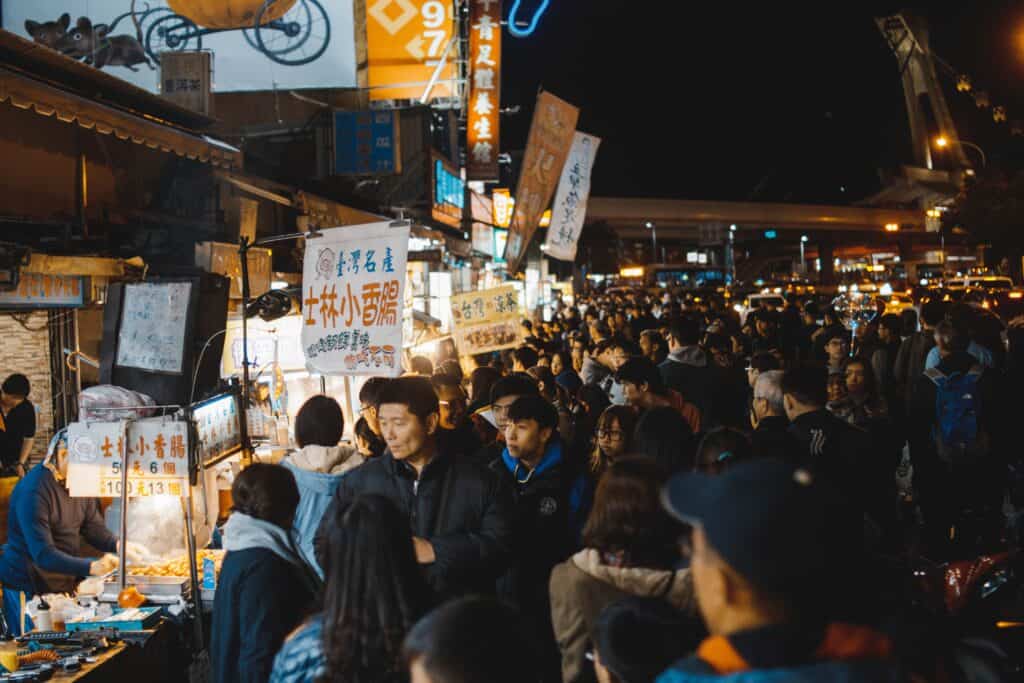
Raohe Night Market
One of the oldest and a very popular markets located in the Songshan District. Raohe Night Market opens daily from 5pm-11pm and is basically one long street so really easy to navigate. This bustling market gives you an authentic experience of local life and has many delicious food options.
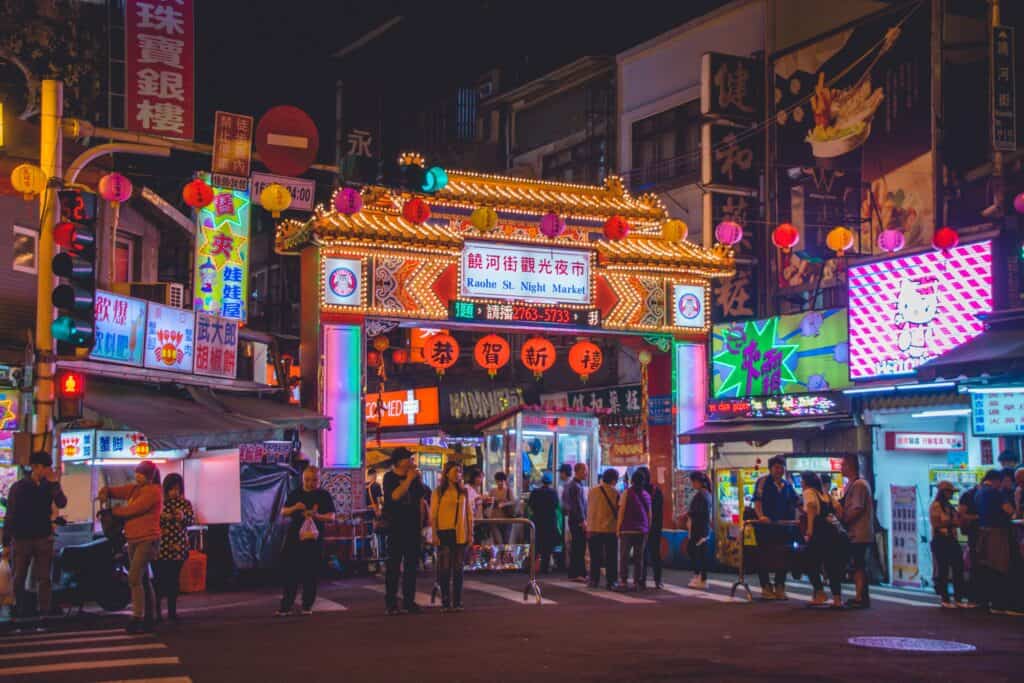
Shilin Night Market
Possibly the most famous and biggest night market with over 500 food stalls. This Shilin night market offers an incredible choice of food and shopping options. From delicious street snacks to handmade crafts and souvenirs, this is a great place to spend the evening.
Shilin Night Market is open daily from 4pm-12am and is located in the Songshan district.
We highly recommend that you spend at least one evening in one of the many night markets that can be found across the city and enjoy this special Taiwanese food experience.
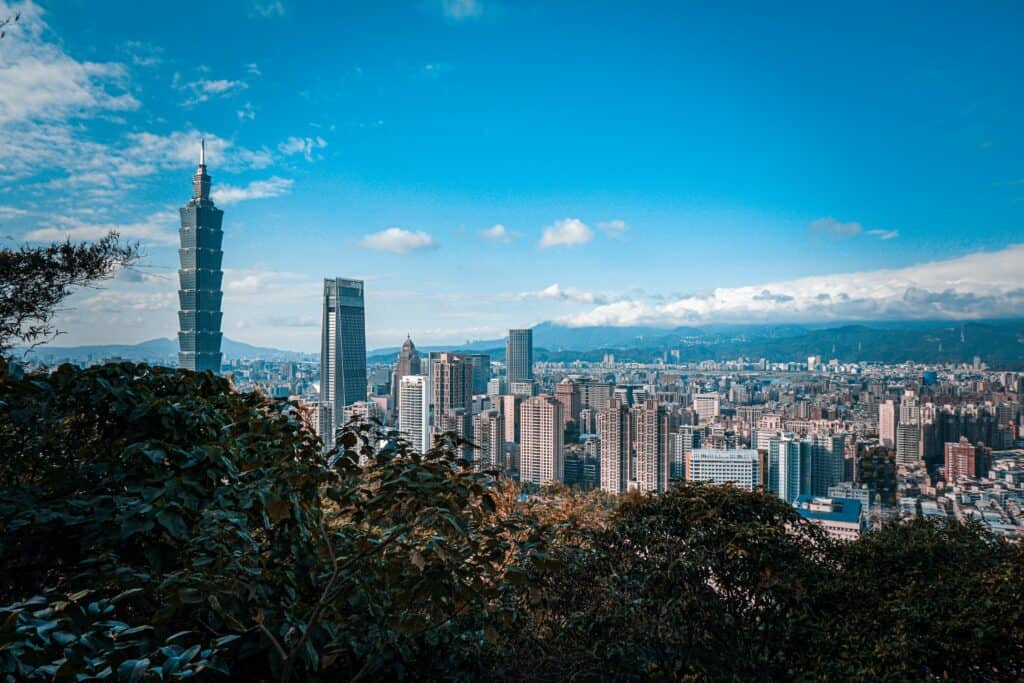
13. Hike Elephant Mountain
Elephant Mountain, or Xiangshan, is a mountain located in Xinyi district. It stands at approximately 180 meters tall and offers spectacular views of the city skyline and nearby Yangmingshan National Park. The mountain is named after its unique shape which resembles an elephant’s back when viewed from afar.
Elephant Mountain is one of the four mountains (four beasts – Tiger, Lion, Leopard) that are connected by the Nangang Mountain range. Because Elephant Mountain is the most accessible it has become the most popular.
The hike is pretty much all steps and can take anywhere from 20 mins to 45 minutes to cover the 1.5km to the top.
As this place is open all day, try and visit either early in the day to avoid crowds, as the place can get very crowded or visit in the early evening as the trail is lit up by lamps.
Whether it’s a leisurely stroll or an exhilarating climb, Elephant Mountain promises its visitors unforgettable views.
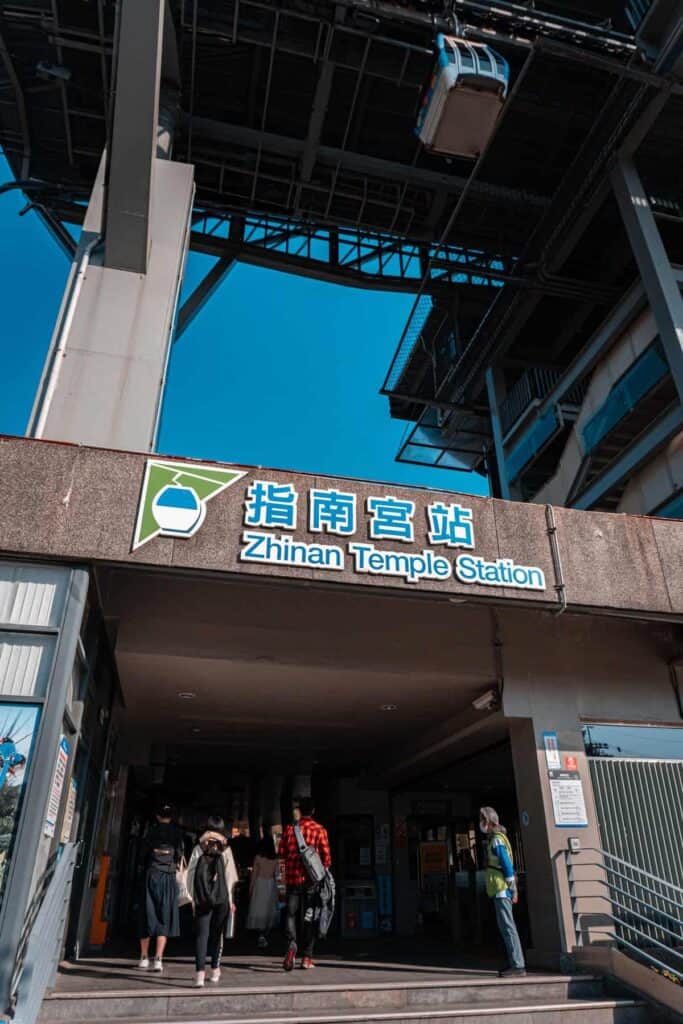
14. Maokong Gondola
The Maokong Gondola in Taipei is an aerial cable car system that offers breathtaking views of the city and its surrounding areas.
The gondola runs from the base station at Taipei Zoo up to Maokong Station at the peak of Maokong mountain. The total gondola ride takes about 25 minutes (4 kilometres) and covers a total of four stations where you can disembark and visit nearby attractions such as temples. At night, the illuminated cars offer a unique experience for taking in some stunning nighttime scenery.
At the end of the line is Maokong, a suburb of Taipei, and is one of the oldest tea growing regions on the island. If you want a tea experience head to one of the many tea houses or tea gardens found close by.

15. Taiwanese Food
Taipei is food heaven and eating is a national obsession – with the philosophy of eating often and well. From the many night markets, local eateries, coffee shops, tea houses and restaurants spread throughout the city the places to eat are endless. These are some must-try recommendations:
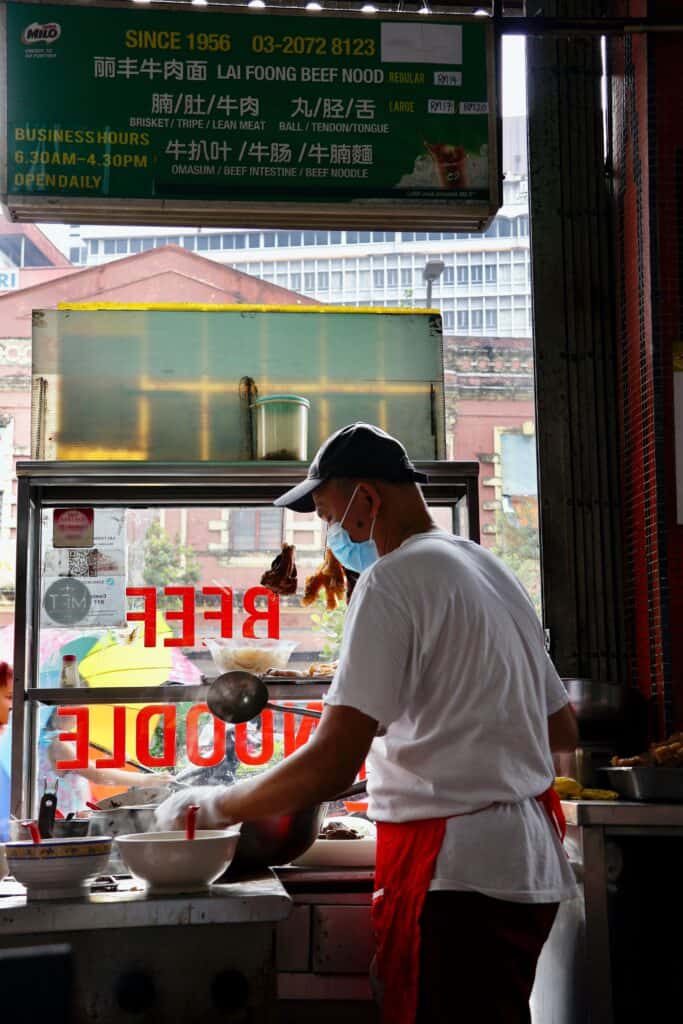
Beef Noodles – The country’s national dish and it even has its own festival with everyone wanting their version to be the best. Whether you’re eating at a restaurant or buying it from a street vendor, you can expect to be served with high-quality fresh ingredients of vegetables and top-grade beef. Plus, the flavours of the soup will vary depending on where you get your bowl of noodles – some places use soy sauce while others prefer spicy chilli peppers. No matter where and which style you eat, one thing is certain, beef noodles in Taipei are always delicious. So make sure you sit down and enjoy this classic comfort food.
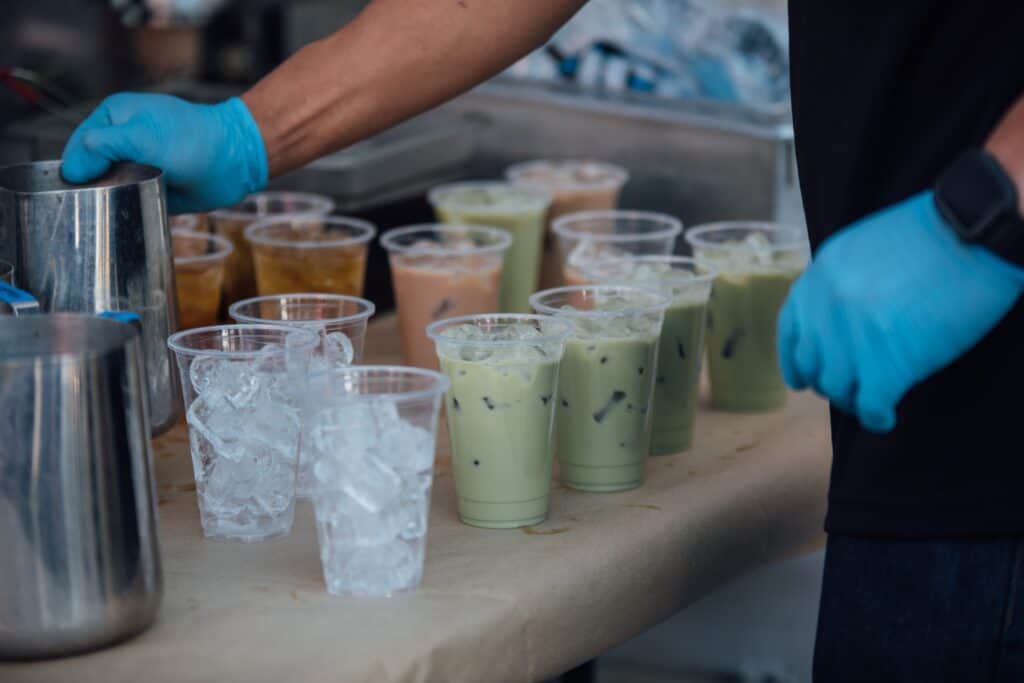
Bubble Tea – One of the country’s most famous street food exports, drinking Bubble Tea with the delicious chewy tapioca balls is a must. Invented in Taiwan in the 1980s you can find bubble tea shops all the city and come in a range of flavours either based on classic milk teas to more exotic fruit-based teas. With its light sweetness and creamy texture, bubble tea makes for a delicious beverage that everyone can enjoy. So when in Taipei make sure to try some famous bubble teas – you won’t be disappointed.
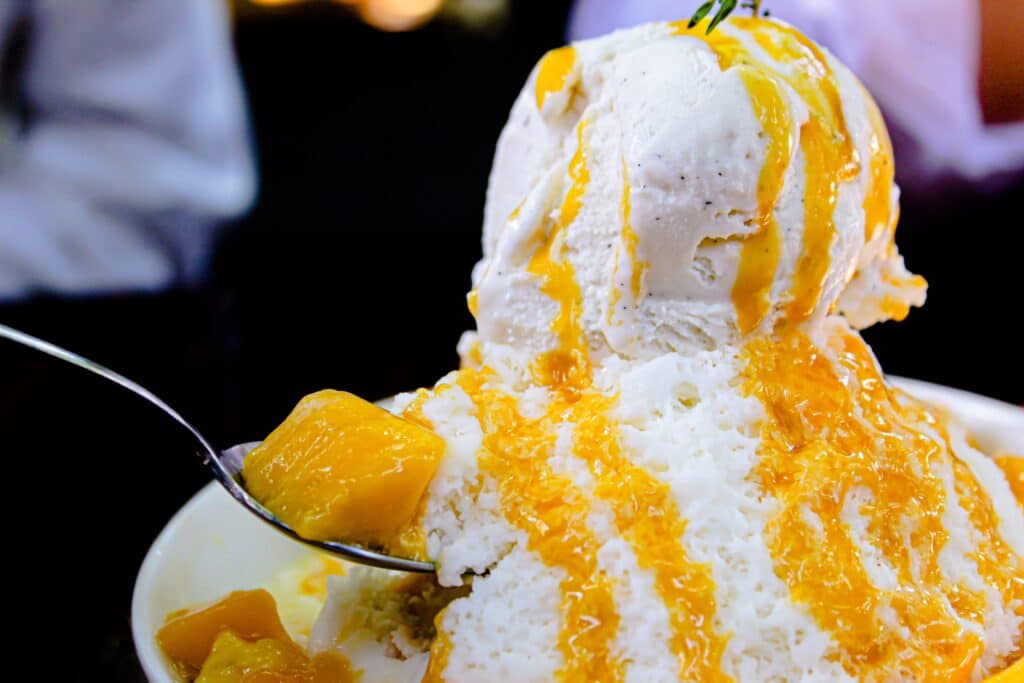
Shaved Ice Deserts – This popular sweet treat known as Bao Bing is made with shaved ice, sweetened with condensed milk and topped with sweet syrups and fruit. It is a great way to sample some of the country’s local flavours such as taro and red bean paste. If you are looking for something new and different to try, make the time to try some of the delicious shaved ice offerings.
Flaky Scallion Pancakes – Flaky scallion pancake, though originating in China, has truly become a Taipei street food classic. Enjoyed throughout the day, this pancake is either eaten alone or with an optional topping such as a fried egg, cheese, cabbage, or ham. Mainly sold by street carts and served in paper bags to eat while on the go.
Xiaolongbao (soup dumplings) – These are steamed dumplings served in a broth and served in most restaurants throughout the city. The most popular place is Din Tia Fung – a Michelin-starred Taipei institution (now with chain restaurants around the world). Eating dumpling in the original branch located in the Da’an district is one for the foodie bucket list.
Pepper Buns – A beloved Taiwanese street food, these steaming hot buns come filled with various ingredients, mainly pork based and flavoured with lots of freshly ground Sichuan peppercorns to give it that spicy kick. Normally baked on the walls of a cylindrical oven and served pipping hot by street vendors throughout the city; whether it be for an early morning snack or part of a late-night craving.
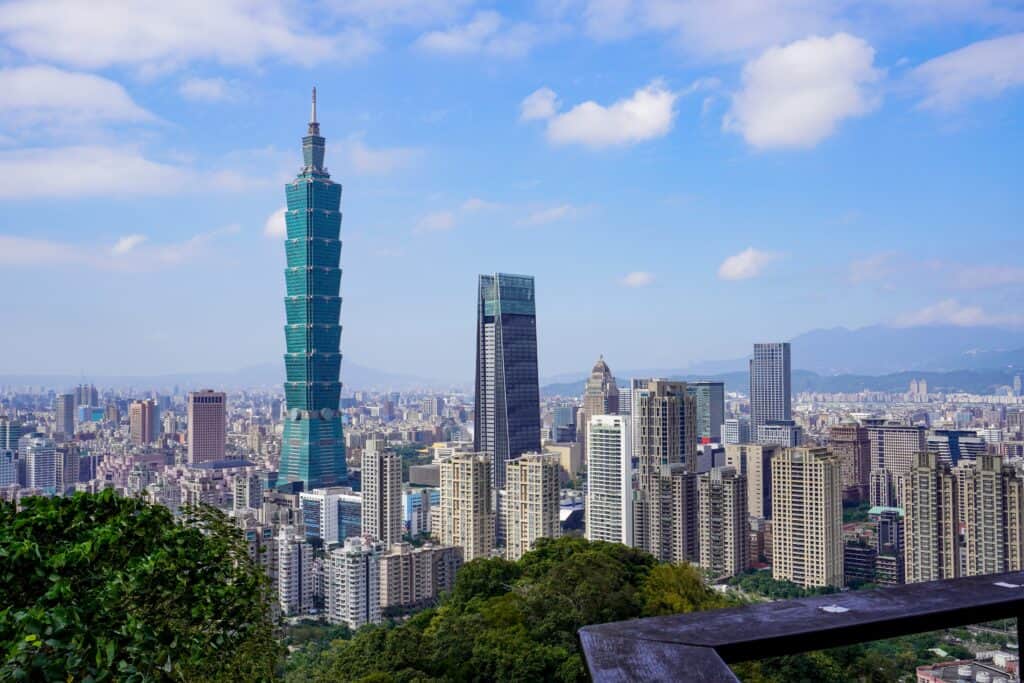
So to wrap up the 15 Best Things To Do In Taipei…
Taipei is truly a wonderful city and you won’t be short of things to do. From vibrant night markets serving delicious food to ancient temples, bustling historic streets, museums and modern shopping areas there’s something for everyone in this fun metropolis.
No that you know what the best things to do in this city are, there is nothing left to do but experience this capital city for yourself and see why many consider it one of Asia’s top destinations.
Read our blog on the Best Things To Do Outside of Taipei for some great ideas for getting away from the city.
Further FAQs
When is the Best Time to Visit Taipei?
The best time to visit Taipei is during the spring season (March-May) or autumn/fall (September-November). The weather is mild and comfortable in these months for sightseeing and exploring the city.
Which Airports Serve Taipei?
Taipei has two airports. The first airport is Taipei Songshan Airport, which mainly handles domestic flights and is located in the northern part of the city.
The second airport is Taipei Taoyuan International Airport, which is the primary international gateway into the country. Taiwan Taoyuan International Airport is located about 40 kilometres west of Taipei.
Taipei Taoyuan International Airport is recognized as one of the world’s best airports, boasting state-of-the-art facilities and efficient transportation options to and from the airport.
Taipei and the north experience some 95 inches of rainfall yearly, reaching a peak in the summer months between June to September.
What Local Transport Options Are Available?
The city has many great options for getting around the city. From public buses, the metro and taxis and rideshares.
The Taipei metro known as the MRT (Mass Rapid Transit) is an efficient and convenient way to get around the city. The network consists of five different lines that cover much of the city’s main attractions and business districts. With over 120 stations throughout the metropolitan area, it is one of the most comprehensive metro systems in Asia.
The MRT runs from 6:00am until midnight on weekdays and to 1:30 am on the weekends. Furthermore, its fast speed means that travellers can easily access any part of Taipei without having to worry about traffic jams or delays. With its extensive coverage and reliable service, the MRT makes getting around the capital easy and stress-free.
All stops and trains have signs in English and the stop announcements are in four languages, including English. Be aware that drinking, eating and chewing gum are all banned on the metro.
Taipei operates an efficient bus service throughout the city and destination information is also displayed in English.
Taxis in the city are plentiful and while a lot more expensive than public transport the prices are still lower compared to international standards. Ride-hailing apps such as Uber operate in Taipei.
A great travel pass option is the EasyCard, a contactless smartcard that you top up with credit. This card can be used on the metro and bus system as well as in convenience stores and supermarkets.
Where to Stay?
There are many districts in the city that offer great accommodation options. The best districts to stay in Taipei are:
Da’an – Traditionally a commercial hub, Da’an is now considered one of the hippest ares of the city and is home to many great restaurants, cafes, bars and markets. Da’an’s biggest draw is its great food scene, and has many great restaurants, cafes, bars and markets. The famous Yongkang Street is located in this district making it great location to stay in Taipei.
Datong – One of the oldest and most important, districts from a cultural and historical standpoint. This district is filled with many of the city’s key attractions including the Confucius and Bao-an Temples, night markets and Dihua Street.
Wanhua – This district is one of the city’s most historic and is where you will find Longshan Temple, Bopilioa Historical Block and the Red House. This district also has one of the city’s most liveliest neighbourhood, Ximending which is famous for its bright lights, entertainment and shopping.
Xinyi – With Taipei 101 at its centrepiece, this district is the premier destination for luxury and business travellers. It is the financial hub and boasts some of Taipei’s most luxury stores, hotels, nightclubs and bars.
Zhongshan – This is a more of a residential district of the city and has more of a laid back atmosphere compared to other districts, so is a great choice for families.
Zhongzheng – This is the most central district in city and has many historic and cultural sites. A popular areas for tourists as it is here you will find many government building as well as Liberty Square. This is also the district for Taipei’s main train station and bus terminal which connects you to every part of the country.
Is Taipei Safe?
Taipei is considered one of the safest cities in Asia for travellers. The streets are well-lit at night and crime rates are low compared to other major cities around the world. Additionally, many locals speak English which makes navigating your way around much easier if you’re not familiar with Mandarin or Taiwanese dialects. With some common sense precautions, you can easily explore Taipei without worrying too much about safety concerns.
For travel inspiration outside of Taipei, read my best things to do outside of Taipei blog post.
Read my 35 Most Important Travel Safety Tips You Should Know for great advise on all things travel safety.

